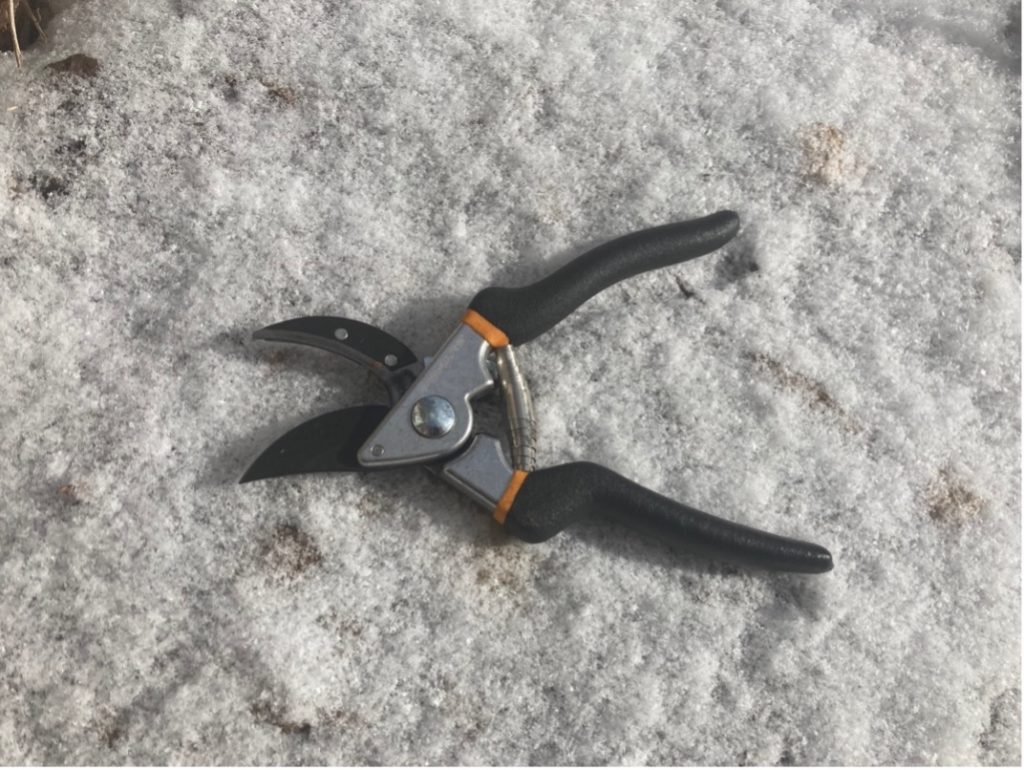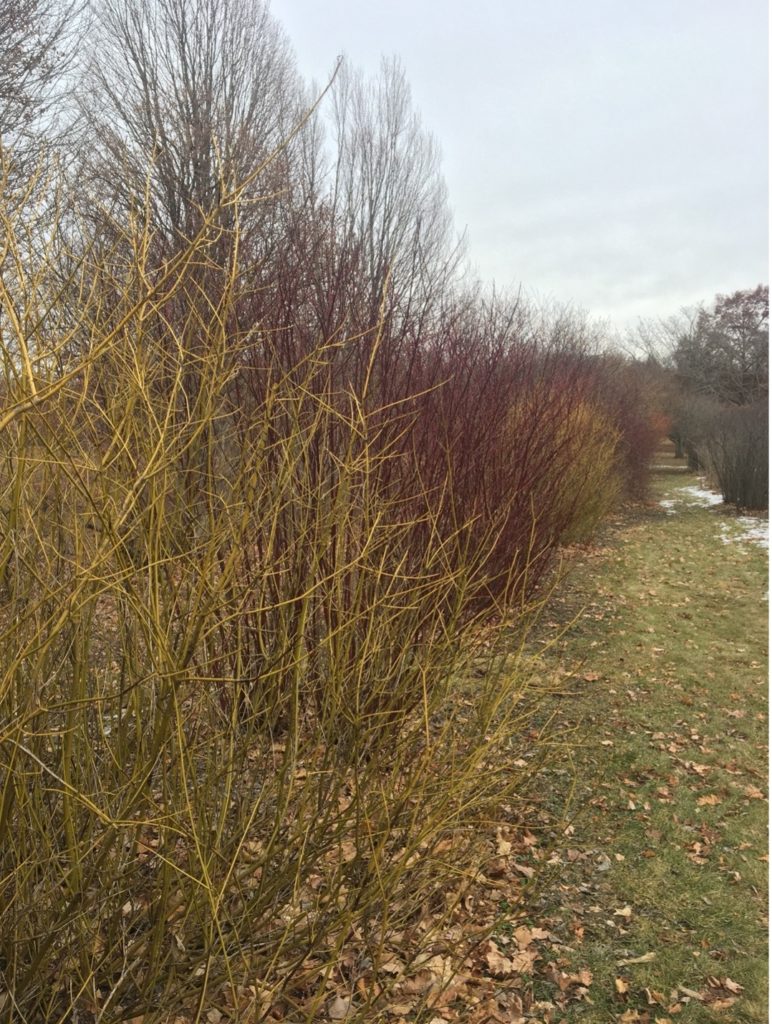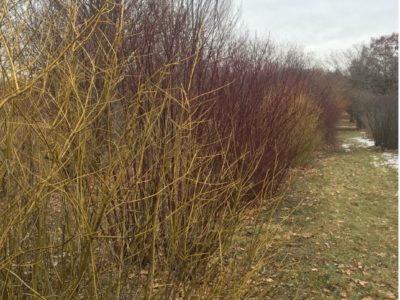By: Matthew Olson
February 9th 2022
Winter Pruning for Deciduous Shrubs

Pruning can be a daunting task. Understanding how, when, and what to prune can be overwhelming for gardeners, regardless of experience level. It may seem as though removing parts of a shrub would lead to damage for the plant. However, proper pruning has many benefits that lead to better health and increased vigor. Winter is the ideal time to prune our shrubs and give them a fresh beginning to a new season.
Why Prune?
Pruning allows us to manage the shrubs in the garden. Whether we’re fighting disease, reducing the size of a plant, or rejuvenating an older shrub, pruning can help achieve our goals. Winter is an excellent time to prune for several reasons. The lack of foliage allows us to observe the shape of a shrub, taking note of weak or dead branches. Shrubs experience less stress when pruned during dormancy. It’s an activity that allows us to work in the garden and keep away the cabin fever. Before you prune, it’s important to have a goal for why you’re pruning a shrub. Your goal may be to reduce disease problems, manage plant size, or increase flowering.
Pruning Methods
There are several methods of pruning that can help achieve your goal.
Renewal Pruning– Involves cutting 1/3 of the stems to the ground each year. Stems that are removed are typically old, overgrown, or dead. This can be done over a 3 year period to prune the entire shrub, creating a more vigorous plant, with increased flowering. This method of pruning works well for most types of deciduous shrubs.
Rejuvenation Pruning– This method is simple and useful for shrubs that are overgrown or leggy. To rejuvenate a shrub, simply cut down all the stems to near ground level, leaving about 6-12 inches of the stem at the bottom. Note: Not every shrub can be pruned using this method. Only shrubs with multiple stems can be rejuvenated. Here’s a list of shrubs that respond well to rejuvenation pruning.
- Common Lilac
- Potentilla
- Forsythia
- Red-Twig Dogwood
- Willow Shrubs
- Japanese Spirea
- Honeysuckle
- ‘Annabelle’ Hydrangea
Heading back- Involves reducing the height of a shrub by cutting back branches to a lower branch or bud. When cutting back a branch, the cut should be angled, and made no more than ¼ inch above the bud. Note: Never leave a stub above the cut. Wood that is left above a cut will rot, which can lead to disease or insect problems.
Timing is Important
Many deciduous shrubs are grown for their attractive flowers. Pruning is an effective way to increase flowering and vigor. Shrubs develop their flower buds at different times of the year, and it’s important to know when these buds are developed. Spring flowering shrubs normally produce their flower buds shortly after blooming, which means the best time to prune them is immediately after they bloom. Here’s a few shrubs that fall into this category. Note: You can prune these in winter if you’re okay with missing a year of blooms, especially if the shrub needs rejuvenation.
- Lilacs
- Forsythia
- Viburnum
- Weigelia
- Bridal Wreath Spirea
- Ninebark
- Serviceberry
Summer flowering shrubs typically set their flower buds on new wood in the spring, which means they can be pruned in winter or early spring without losing the flowers. To preserve the flowers, prune these before new growth begins in spring. Here’s a few examples of shrubs that create flowers on new wood.
- Hydrangeas
- Japanese Spirea
- Roses
- Smokebush
- Potentilla
Plan for the Future
The actions we take before planting can have a major impact on the pruning required down the road. Some types of shrubs require more pruning than others, but proper site selection is one factor that has a major impact on the amount of pruning that is required. At my family’s cabin in Wisconsin, there are two lilacs. They were planted about 30 years ago. At the time, they were in a perfect site with full sun. During the first 10 years after planting, they were lush, full, and covered in flowers every spring. As time went on, the pine trees nearby continued to grow, shading the Lilacs. As a result, the Lilacs became leggy, produced few flowers, and had little vigor. We removed one of the Lilacs and will soon remove the other one. I could’ve tried rejuvenating the Lilacs, but it wouldn’t have helped, as the plants were in too much shade. This example shows how site selection is critical when planting shrubs and has a major impact on the effectiveness of pruning. It’s good to visualize what a site will look like in 5, 10, and even 20 years after planting. A common mistake made in landscapes is planting large shrubs close to a building or sidewalk, not realizing the plant will grow too large for that site. This results in plants that must be continuously pruned to keep the plant a manageable size. Choosing a shrub that stays the right size for the site allows for healthier plants that require less pruning.
As you observe the shrubs in your garden, I hope you’re inspired to brave the cold, snowy weather to do some pruning. If not, you can wait until March or April when the snow is hopefully gone, and the temperatures are above zero. Happy Gardening!


